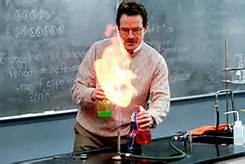 Remember the days of the movie serial? When the good guys all wore white hats and were clean-shaven? The bad guys wore black and had rough faces?
Remember the days of the movie serial? When the good guys all wore white hats and were clean-shaven? The bad guys wore black and had rough faces?
Suddenly the lines blurred. Batman wore dark colors and hid his face. So did The Shadow. And they were heroes, but sometimes worked outside the law.
What happened?
We learned that everybody is human.
About the time we started growing up, media coverage took control of our lives. We learned that our own real-life heroes had warts, too. Television allowed us to share the exposing of Kennedy’s love life and ‘connections’ and Nixon’s political foibles, we saw Pete Rose get kicked out of baseball, and much more.
 And a strange thing happened. We forgave them. Instead of instantly relegating them to the dung-heap of corrupted villains, we developed this strange thing called understanding. This, too, was aided by media-magic. Reporters wormed their way into their personal lives and exposed achingly familiar issues. Familiar because they were the same things that we ‘common people’ faced. We found out that THEY were US!
And a strange thing happened. We forgave them. Instead of instantly relegating them to the dung-heap of corrupted villains, we developed this strange thing called understanding. This, too, was aided by media-magic. Reporters wormed their way into their personal lives and exposed achingly familiar issues. Familiar because they were the same things that we ‘common people’ faced. We found out that THEY were US!
Writers these days work harder than ever to reveal the psyche of their characters. It’s not black and white anymore. Readers demand to understand why the hero devotes his time to fighting certain criminal types, and even more, they want to know what makes the bad guy tick.
 Often bad guys are the most complex of your characters. When creating them, remember they had a mother and father and siblings. Remember they were little kids that either bullied or got bullied in schoolyards and became geeky adolescents or jocks, or perhaps fell into that in-between world of teenagers that just didn’t seem to have any identity at all. In short, nobody is ALL bad.
Often bad guys are the most complex of your characters. When creating them, remember they had a mother and father and siblings. Remember they were little kids that either bullied or got bullied in schoolyards and became geeky adolescents or jocks, or perhaps fell into that in-between world of teenagers that just didn’t seem to have any identity at all. In short, nobody is ALL bad.
The television series’ Dexter and Breaking Bad are prime examples of the blended line between bad and good.
Dexter is a serial killer. But the story line reveals a damaged childhood and the factors that pushed him in that direction. We feel sorry for him. Not only that, but he kills REALLY bad guys. So, is he a hero, or a villain?
Walter White of Breaking Bad was simply a meek science teacher whose life pushed  him to a desperate act, and he was caught in his own trap. He was a family man, and had cancer! Who can hate a guy with cancer? It’s the other bad guys – other drug dealers or (heaven forbid) the law officers, who come after him that we feared. We wanted him to escape and cease the criminal activity, but without being caught. How twisted is that? (No spoiler here, for those of you who haven’t got there yet…)
him to a desperate act, and he was caught in his own trap. He was a family man, and had cancer! Who can hate a guy with cancer? It’s the other bad guys – other drug dealers or (heaven forbid) the law officers, who come after him that we feared. We wanted him to escape and cease the criminal activity, but without being caught. How twisted is that? (No spoiler here, for those of you who haven’t got there yet…)
Have you made your villain sympathetic? With concerns just like the rest of us? Is he actually bad, or just a victim of circumstances?
Sometimes the real story is finding redemption…even if it is in the capture and punishment that is inevitable.
Fun to work on, isn’t it?







Great observations and I agree that we have grown much more forgiving, which is good. I confess that I still prefer for the good guys win, but well drawn bad guys make me wish for their redemption.
DJ – I admit, I get suckered into feeling sorry for them…!
Interesting concept. I am wrestling with that very thing in one of my characters right now. How to make him sympathetic and even lovable.
good for you! You may even find a new twist…